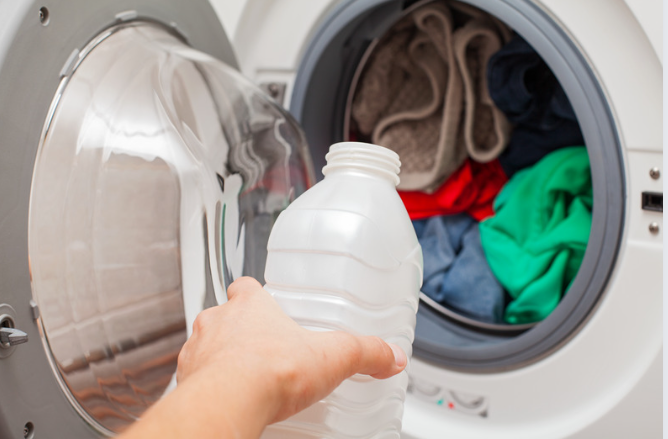Historical Background: The use of vinegar in household cleaning and laundry has a long history. Vinegar, particularly white distilled vinegar, has been a staple in many homes for generations due to its versatility and effectiveness. It was often used by previous generations before the advent of modern, chemical-based cleaners and softeners. People have long appreciated vinegar for its ability to clean, disinfect, and soften fabrics without leaving behind any harmful residues.
Benefits of Using Vinegar:
Softens Fabrics: White vinegar helps to soften fabrics by dissolving detergent residues that can make clothes feel stiff. It leaves clothes feeling naturally soft without the use of synthetic chemicals.
Reduces Static: Adding vinegar to the rinse cycle helps to reduce static cling by neutralizing the electric charges that build up in the dryer, which is particularly beneficial for synthetic fabrics.
Neutralizes Odors: Vinegar’s acidic properties effectively neutralize odors, making it great for removing persistent smells like smoke, sweat, or mildew from fabrics.
Preserves Color: Unlike commercial softeners that can sometimes dull the color of clothes, vinegar helps to maintain and brighten colors by removing soap and detergent residues.
Eco-Friendly and Non-Toxic: Vinegar is a natural product that is biodegradable and free of synthetic fragrances and chemicals, making it a safer option for the environment and those with sensitive skin or allergies.
Cost-Effective: White vinegar is inexpensive and readily available, making it a budget-friendly alternative to commercial fabric softeners.
How to Use Vinegar as Fabric Softener:
Measure the Vinegar: Add 1/2 cup of white distilled vinegar to the fabric softener dispenser of your washing machine. If your machine doesn’t have a dispenser, add the vinegar during the rinse cycle.
For Larger Loads: For particularly large or heavily soiled loads, you can increase the amount of vinegar to 3/4 or even 1 cup.
No Vinegar Smell: Rest assured, the vinegar smell will not linger on your clothes after they dry. The acetic acid in vinegar neutralizes during the washing process, leaving your clothes smelling fresh and clean.
Optional Add-Ons: For a light fragrance, you can add a few drops of your favorite essential oil to the vinegar before adding it to the wash.
Who Uses It: This method is widely used by people who are looking for natural and effective alternatives to commercial laundry products. It’s popular among those with sensitive skin, eco-conscious consumers, and those looking to avoid synthetic chemicals in their household routines.
Interesting Facts:
- Vinegar has been used in household cleaning since ancient times, and its use in laundry is just one of its many applications.
- During World War II, when commercial cleaners were scarce, vinegar became a go-to solution for households.
Final Thoughts: Incorporating vinegar into your laundry routine is a simple, effective way to achieve softer, fresher clothes without relying on commercial fabric softeners. It’s a method rooted in tradition and appreciated by those looking for sustainable, chemical-free cleaning solutions. Whether you’re looking to cut down on synthetic chemicals in your home, save money, or simply achieve better laundry results, vinegar is a versatile and powerful tool.

Join The Discussion!